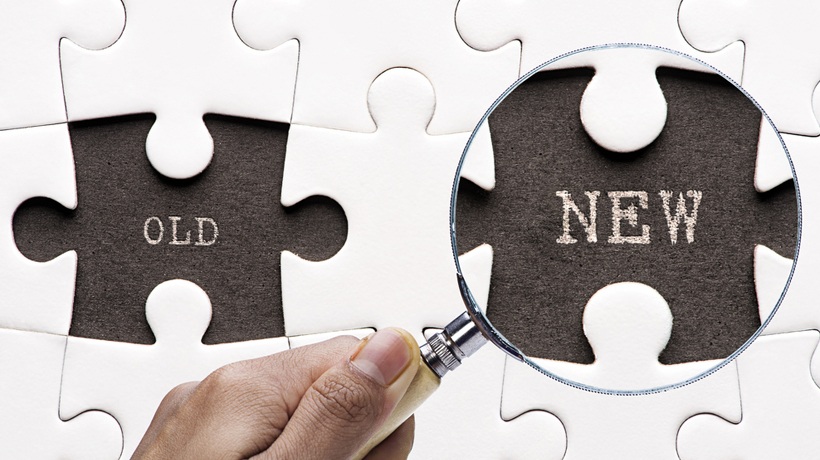Leverage The Power Of Your Organization's Legacy Content
In the ever-evolving landscape of corporate Learning and Development, the value of legacy content is often underestimated. Many organizations possess a treasure trove of training materials accumulated over the years. These materials, often in the form of PDFs, Word documents, or even printed manuals, contain a wealth of knowledge. However, they can quickly become outdated, irrelevant, or inaccessible to modern learners.
The question then arises: Is there a way to breathe new life into this content and make it valuable once more? The answer is a resounding yes, and it involves a strategic transformation process that merges the old with the new. The process can repurpose, revitalize, and rejuvenate the wealth of information and insights that may seem dated for modern learners.
Why Transform Legacy Content?
Revamping legacy content is not just about modernizing your training; it's also a strategic move. Before diving into the "how", it's essential to understand the "why." Here are some compelling reasons to consider the transformation of your legacy content:
- Engaging learners
Engaging learners is essential for effective learning. Modern learners respond well to multimedia-rich content, interactivity, and bite-sized modules. Legacy content often lacks these elements, making it less engaging for today's workforce. - Tracking learner performance
Tracking learner performance is crucial for ongoing improvement. Legacy content typically lacks the analytics and tracking capabilities that modern eLearning platforms offer. Without data on how learners are progressing, it's challenging to refine and optimize the learning experience. - Appealing to modern learners
Modern learners expect on-the-go access to learning materials. They want to learn at their own pace, on their own devices. Legacy content, often confined to physical documents or outdated digital formats, doesn't align with these expectations. - Cost-effectiveness
Reusing and modernizing existing content can be significantly more cost-effective than creating entirely new materials from scratch. It's a smart way to maximize your training budget.
The Transformation Process
Now, you might be wondering how to infuse new life into your legacy content, turning it into an asset that engages modern learners and drives results. The process involves ten key steps:
1. Discovery Call
The transformation journey begins with a discovery call. During this initial conversation, your organization and eLearning specialists align on objectives, scope, timelines, and budget. This is the foundation upon which the entire project will be built.
2. Content Audit
Next, a thorough content audit is conducted. This step involves a comprehensive review of your existing legacy materials. What's still relevant? What needs updating? What can be discarded? The goal is to identify the core content that will form the basis of your transformed learning materials.
3. Content Modernization
With a clear understanding of what to retain and revamp, the content modernization process begins. This stage involves converting text-heavy documents into engaging, multimedia-rich eLearning modules. This could include the creation of interactive videos, infographics, podcasts, animations, interactive PDFs, and more. The aim is to make the content visually appealing and highly engaging.
4. Learner-Centered Design
An essential aspect of modernizing legacy content is ensuring it caters to the needs and preferences of your target audience. This means adopting a learner-centered design approach. Content is broken down into bite-sized, digestible modules. It's made accessible on multiple devices, allowing learners to access it whenever and wherever they need it. Interactivity is key here, with quizzes, assessments, and interactive elements incorporated to engage the learner.
5. Quality Assurance
Rigorous testing and quality checks are pivotal in ensuring your transformed content functions seamlessly. This includes checking for any technical glitches, ensuring all multimedia elements work as intended, and verifying that the content aligns with your learning objectives.
6. Pilot Testing
Before the full launch, a pilot test is conducted with a select group of learners. This real-world testing allows for feedback and fine-tuning based on the actual experiences of the users.
7. Deployment
With the content refined and polished, it's time for deployment. This involves making the transformed learning materials accessible to your target audience. Whether through a Learning Management System (LMS), a dedicated portal, or another platform, learners are given access to the content.
8. Monitoring And Evaluation
Once the content is deployed, ongoing monitoring and evaluation are crucial. Learning analytics are employed to track learner progress, engagement, and performance. This data helps refine the content further and make any necessary adjustments.
9. Learning Intervention Effectiveness Survey
Post-implementation, a survey is often conducted to gather feedback directly from learners. This helps assess the effectiveness of the learning intervention and provides valuable insights for continuous improvement.
10. Iterative Process
The transformation process is iterative. Based on data, feedback, and changing organizational needs, the content is continuously refined and updated to ensure it remains relevant and effective.
The Bottom Line
By repurposing your existing knowledge, you can provide your learners with contextually engaging, up-to-date training materials while maximizing your budget. So, why let your legacy content gather dust? Partner with an expert and transform your treasure trove of knowledge into a valuable, modern asset that drives results and elevates your training programs to new heights. Don't just look to the future; leverage your past for success. Embark on this transformative journey—your legacy content is waiting to shine!









